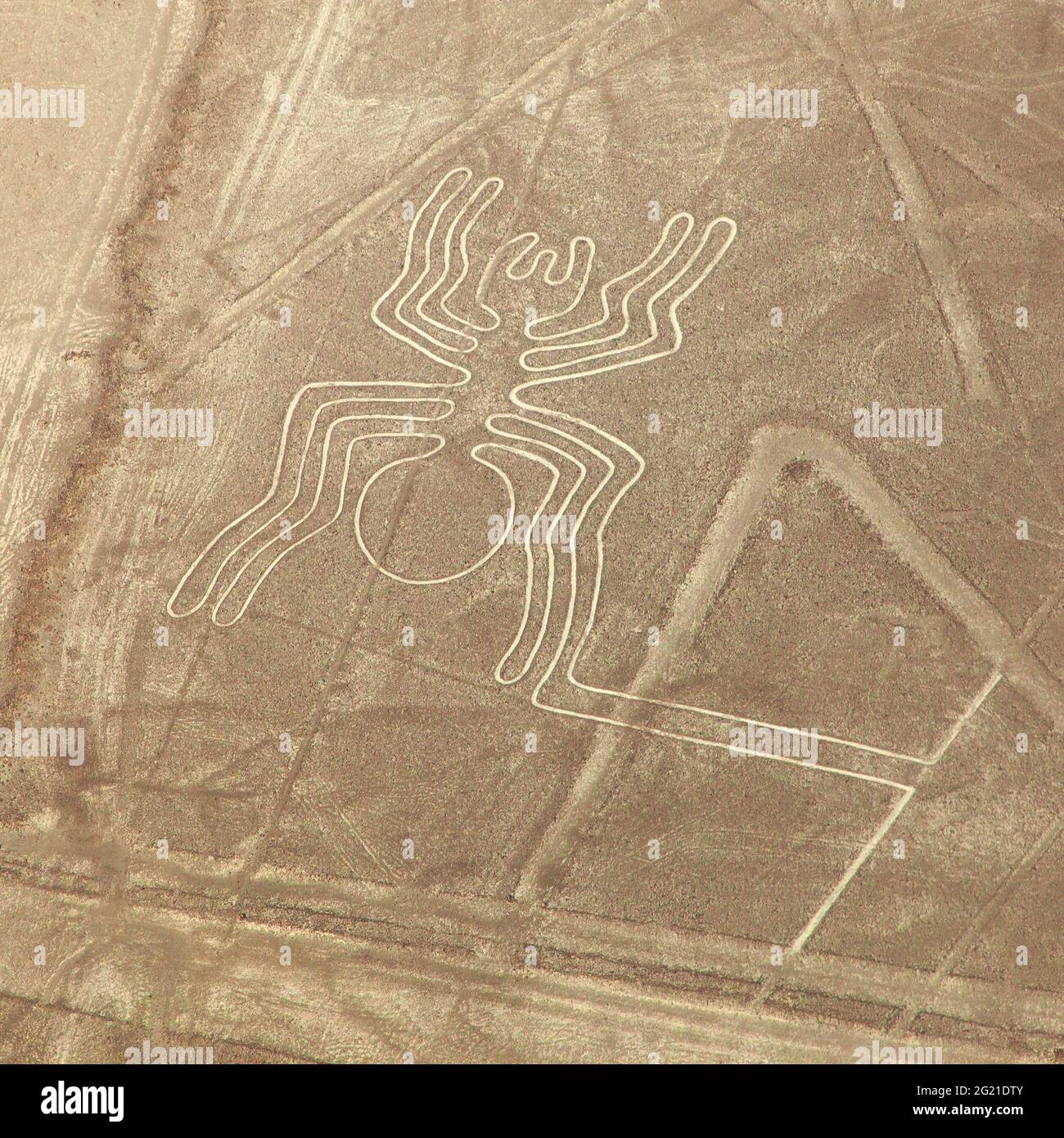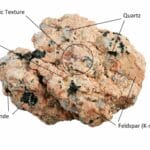Picture this: a colossal spider, sprawled across the arid floor of the Peruvian desert, its intricate form visible only from the air. This is the Nazca Spider, one of the most enigmatic geoglyphs among the famed Nazca Lines, etched onto the earth by a civilization that vanished centuries ago. For decades, researchers and dreamers alike have been captivated by the mystery of the Nazca Spider: what did this ancient culture hope to communicate through this sprawling work of art?
A Spider in the Sand: A Legacy Shrouded in Mystery
The Nazca Spider, measuring an impressive 47 meters (154 feet) in length, is more than just a simple drawing. Its immense scale—easily encompassing a football field—speaks to the dedication and artistry of the Nazca people, who likely created this massive geoglyph between 500 BC and 500 AD. Using rudimentary tools, they carefully removed the reddish pebbles that blanket the desert floor to expose the lighter-colored earth beneath, forming the striking lines that continue to fascinate us today.
Located in the desolate yet breathtaking Nazca Desert, some 400 kilometers (250 miles) south of Lima, Peru, the Nazca Spider is part of a vast network of geoglyphs known as the Nazca Lines. These lines depict a menagerie of creatures—hummingbirds, monkeys, even a killer whale—alongside geometric shapes and seemingly abstract patterns, all etched into this arid landscape.
While the true purpose of the Nazca Lines remains shrouded in mystery, numerous theories abound, each offering a glimpse into the possible beliefs and practices of the Nazca people. Some experts suggest that the Nazca Spider, along with other animal figures, may represent constellations in the night sky, acting as a celestial calendar used to track the movements of the stars and predict important agricultural events.
Unweaving the Theories: What Might the Nazca Spider Mean?
The Nazca Spider, with its prominent position among the other geoglyphs, has been a particular focus of speculation. One compelling theory proposes that the spider was associated with water, a precious and scarce resource in the arid environment of the Nazca Desert. The spider’s possible connection to rainfall and fertility, crucial for the survival of the Nazca people, is further strengthened by its location near ancient water sources. Could this majestic arachnid have served as a plea to the gods for rain, ensuring the prosperity of their crops and their people?
Adding another layer to the puzzle is the prominent role of women in Nazca society. Archaeological evidence suggests that women held positions of power and influence, and some researchers believe that the Nazca Spider might represent a powerful female deity, perhaps even a goddess of fertility. Spiders, often seen as weavers of life and creators in many cultures, could have held profound symbolic significance for the Nazca, embodying the power of creation and abundance.
The Nazca people’s knowledge of astronomy adds further intrigue. Experts have noted possible alignments between some of the Nazca Lines, including the Spider, and significant astronomical events like solstices and equinoxes. This suggests that the Nazca Lines may have served as a vast observatory or calendar, used to mark the changing seasons and guide agricultural practices.
It’s crucial to remember that these are just a few of the many theories surrounding the Nazca Spider and the larger Nazca Lines complex. The fact that the Nazca people left no written records to explain their creations only deepens the mystery, ensuring that these enigmatic lines in the sand continue to inspire wonder and debate for generations to come.
Preserving a Legacy: Protecting the Nazca Spider for Future Generations
The Nazca Lines, including the remarkable Nazca Spider, are incredibly fragile. Despite surviving for centuries, these ancient geoglyphs face threats from erosion, human encroachment, and even the impact of tourism. Recognizing their cultural and historical significance, UNESCO designated the Nazca Lines as a World Heritage Site in 1994.
Efforts to protect and preserve these delicate etchings are ongoing. Researchers, archaeologists, and conservationists work tirelessly to study and document the lines, while also implementing measures to minimize damage from the elements and human activity. Responsible tourism plays a crucial role in ensuring the long-term survival of the Nazca Lines. Visitors are encouraged to view the geoglyphs from designated observation towers or through aerial tours, minimizing their impact on the fragile desert floor.
The Nazca Spider, with its sprawling legs and enigmatic presence, stands as a testament to the ingenuity and artistry of a culture that thrived millennia ago. Though its true meaning may remain elusive, the Nazca Spider continues to beckon us, inviting us to ponder the mysteries of the past and to marvel at the enduring power of human creativity.
Further Exploration: Journey Into the Past
If you’re intrigued by the Nazca Spider and the mysteries of ancient civilizations, consider delving deeper with these related articles:
- Discover the Old Chickahominy House, a relic of the American Civil War, offering a glimpse into a different chapter of history.
- Explore the enigmatic Peaks on a Desert Mountain NYT article to uncover more about ancient cultures who left their mark on the world through mysterious drawings.
- Unlock Water’s Symbolism: A Cross-Cultural Exploration - April 20, 2025
- Identify Black and White Snakes: Venomous or Harmless? - April 20, 2025
- Unlocking Potential: Origins High School’s NYC Story - April 20, 2025















